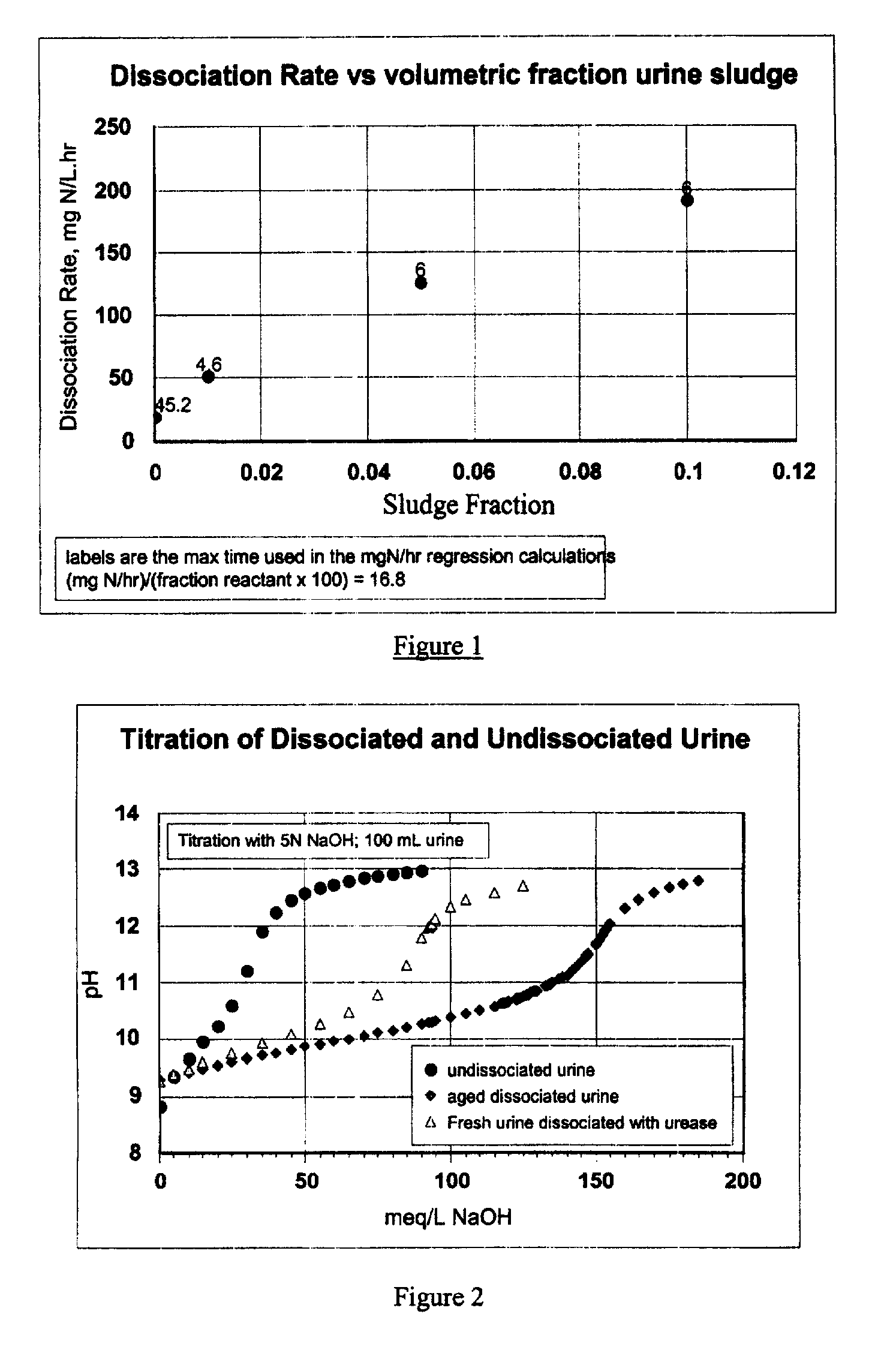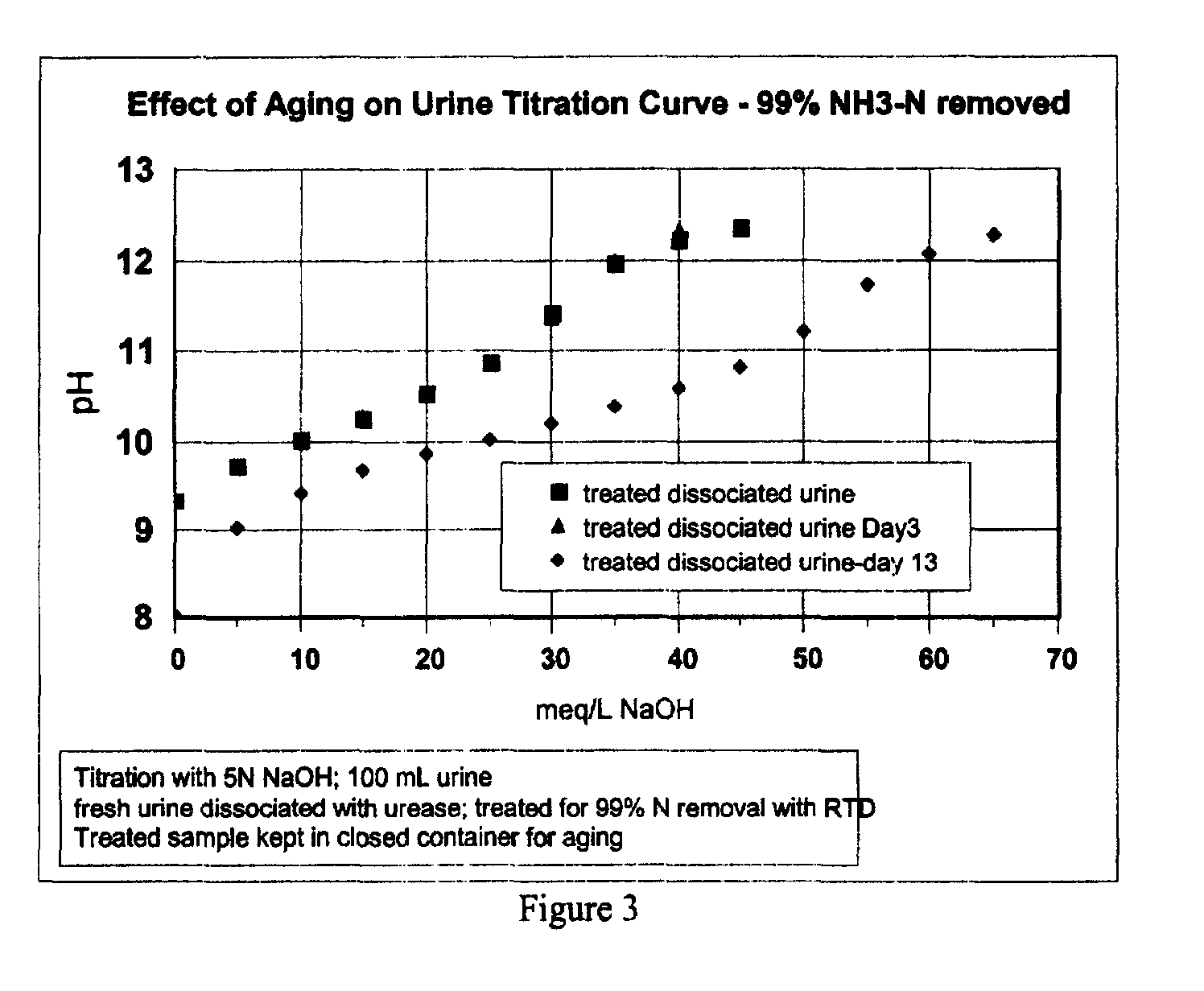Process for recovery of nutrients from wastewater
a wastewater and nutrients technology, applied in water/sludge/sewage treatment, differential sedimentation, application, etc., can solve the problems of large storage volume, state of the art, and inability to meet the requirements of large volume and energy requirements inherent in the process
- Summary
- Abstract
- Description
- Claims
- Application Information
AI Technical Summary
Benefits of technology
Problems solved by technology
Method used
Image
Examples
Embodiment Construction
[0023]In accordance with a preferred embodiment of the present process, the economical separation, collection, and removal of ammonia and phosphorous from a wastewater is facilitated by diverting the portion of the wastewater containing the majority of these species and treating it to effect removal of ammonia and phosphorus prior to dilution by mixing with other wastewater, if any, for final treatment.
[0024]Preferably, in process for treating a wastewater comprising an ammonium ion species and a phosphorus species, it is highly preferred that Steps (i) and (ii) are conducted substantially sequentially.
[0025]The phosphorus removal process relates to the fact that ammonia, magnesium and phosphate ions combine in the molar ratio of 1:1:1 to form a relatively insoluble salt called struvite (NH4MgPO4.6H2O) at a pH of about 8.4 or higher. The theoretical optimum pH being in the range between 10.0 and 10.7. In instances where magnesium concentration in the wastewater effluent is a limitin...
PUM
| Property | Measurement | Unit |
|---|---|---|
| Time | aaaaa | aaaaa |
| Concentration | aaaaa | aaaaa |
| Dissociation | aaaaa | aaaaa |
Abstract
Description
Claims
Application Information
 Login to View More
Login to View More - R&D
- Intellectual Property
- Life Sciences
- Materials
- Tech Scout
- Unparalleled Data Quality
- Higher Quality Content
- 60% Fewer Hallucinations
Browse by: Latest US Patents, China's latest patents, Technical Efficacy Thesaurus, Application Domain, Technology Topic, Popular Technical Reports.
© 2025 PatSnap. All rights reserved.Legal|Privacy policy|Modern Slavery Act Transparency Statement|Sitemap|About US| Contact US: help@patsnap.com



